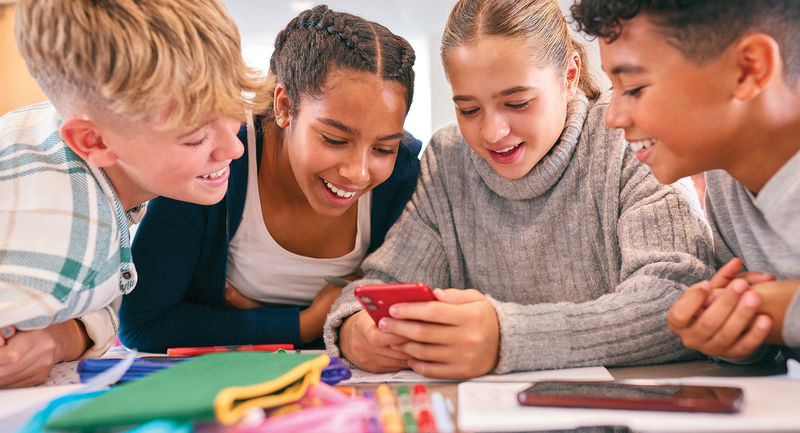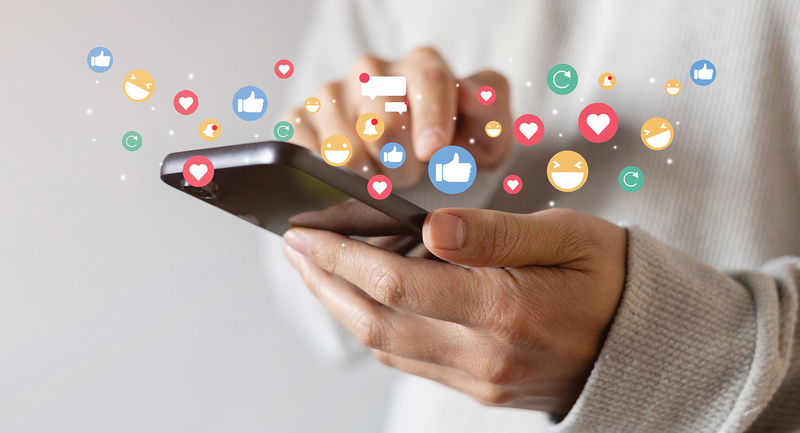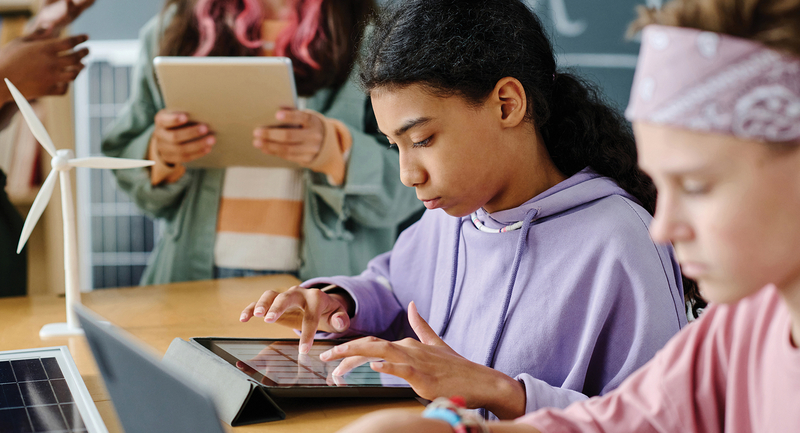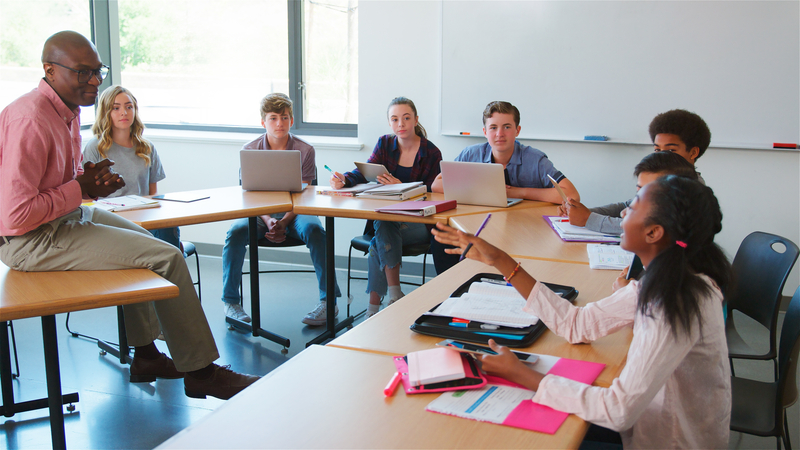As of this writing, 675 school districts in 32 states have sued the companies behind several social media platforms, including Snapchat, Facebook, Instagram, and TikTok, alleging their “harmful and exploitive” content is a key driver of the adolescent mental health crisis (Murtaugh, 2023). Such concerns have been echoed by U.S. Surgeon General Vivek Murthy, whose 2023 advisory singled out adverse effects of social media on young people’s mental health.
Psychology professor Jean Twenge was among the first researchers to raise the alarm about a potential link between students’ use of smartphones and social media and their declining mental health. While examining decades of longitudinal data from large surveys of American youth, she noticed a disturbing trend. After several decades of gains in adolescent self-esteem and happiness from the 1970s through the 2000s, those measures dropped precipitously in 2011. When her team sifted through the data for possible explanations, none seemed to match except one: the explosive growth in the use of smartphones and social media that year. They found, in fact, that teen girls who used social media 6 hours per day were 67 percent more likely to report being unhappy than those who used it for just 30 minutes per day (Twenge et al., 2018).
Same Data, Different Conclusions
Of course, as we all know, correlation does not prove causation. So, it’s not surprising that scores of researchers, including Candice Odgers and Gillian Hayes in this very issue of EL, have drawn wildly different conclusions about perceived links between digital media use and young people’s mental health. A recent “umbrella” review of 25 research reviews (Valkenburg et al., 2022) found that most of these studies reported “weak” or “inconsistent” findings; however, a handful reported “substantial” or “deleterious” effects. It’s unlikely that social media is the sole culprit behind the sharp drop in young people’s well-being.
In some cases, researchers have even drawn starkly different conclusions from the same data. Orben and Przybylski (2019), for example, examined the same survey data as Twenge and found a negative association between use of digital media and teens’ mental health, yet determined it was exceedingly small, accounting for less than 1 percent of the variance in mental health. This is far less than the positive association between well-being and regularly eating breakfast or between well-being and getting enough sleep.
Why Don’t Researchers Agree?
So, what’s behind these wildly different conclusions? Here are some things to keep in mind.
Research is new and sometimes not very good. Smartphones and social media have only been around for barely more than a decade, so the research on these devices is in its infancy. To put it bluntly, as Orben (2020) observed after analyzing 80 reviews of research on media use and mental health, it’s generally of low quality. Not only is it largely correlational, but it also relies heavily on teens self-reporting their digital activities and mental health, which is fraught with error.
Measures remain imprecise. Many of these studies lump together a hodgepodge of online activities—including reading the news, doing homework, connecting with friends, gaming, and engaging in social media—into broad-brushstroke measures of digital media consumption which, in turn, get compared to a “potpourri of cognitive and affective outcomes” (Valkenburg et al., 2022). And few studies examine the exact nature of teens’ social media use—whether it’s to simply catch up with friends and family or, conversely, obsessively comparing themselves unfavorably to others (Bekalu et al., 2019).
Social media use interacts with other variables. Social media use also seems to be entwined with disrupted sleep patterns, lack of physical activity, cyberbullying, and distorted body image. So, it’s often difficult to tease out the extent to which one may contribute to the other, or if there may be a common risk factor that predisposes some young people to developing both an unhealthy relationship with social media and mental health issues (Ivie et al., 2020).
Perhaps the best thing we can do is help teens understand that, like any relationship, the one they have with their smartphone can be helpful or harmful.
Leading with Common Sense
Though the research is varying, there are some takeaways for educators to help their students use social media safely and responsibly.
Put phones away to learn. Empirical studies find that students struggle to learn (Mendoza et al., 2018) and concentrate (Ward et al., 2017) with their smartphones present. So, it’s wise to put them away when studying or stash them out of sight (e.g., at the front of the classroom) when students need to focus on learning.
Consider the occasional “digital detox.” Experimental studies with both adults (Tromholt, 2016) and college students (Hunt et al., 2018) have found that brief respites from social media can increase people’s happiness and well-being—with particularly strong benefits for heavy social media users. So, teens may benefit from occasionally taking a break from their smartphones and social media with a “digital detox”—as some student groups have done by encouraging a voluntary schoolwide pause.
It’s unlikely that social media is the sole culprit behind the sharp drop in young people’s well-being. Yet for some teens, it appears to be an accomplice, exacerbating other root causes of mental health concerns. Perhaps the best thing we can do is help teens understand that, like any relationship, the one they have with their smartphone can be helpful or harmful. And if they find themselves in a bad relationship, some resetting and reflection may be in order.









